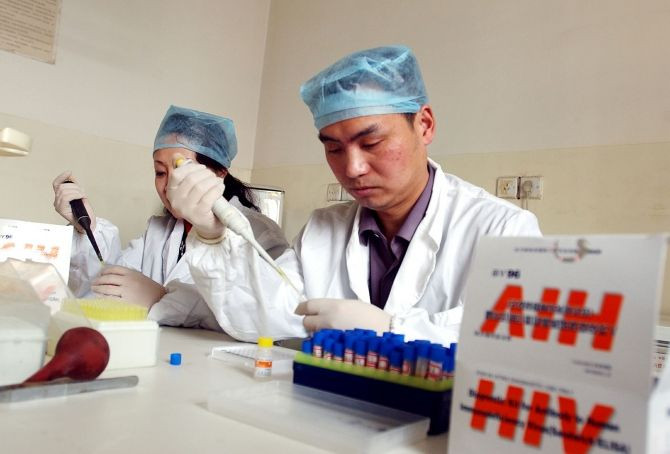NIAID Division of AIDS Chief Sees 'Growing Interest' in AIDS Cure

Dr. Carl Dieffenbach, the director of the Division of AIDS at the National Institute of Allergy and Infectious Diseases says he has seen a “growing interest” for an AIDS cure over the past three to four years.
He told Medical Daily in a phone interview on Wednesday that there has been a 7 to 8 percent growth each year in number of applications to his agency for grants seeking funding for cure research.
He suggests that there could have been more application for grants, but because of the economy, research in the area has lost momentum.
Dieffenbach estimates that around 3 percent of the NIAID budget goes to this area of development.
In May, Dieffenbach, along with Dr. Anthony Fauci, the director of the NIAID, wrote in the Annals of Internal Medicine that as a result of successes over the last 30 years in understanding, treating and preventing HIV infection and AIDS “it is now time to focus on future challenges.”
He said the challenges included “efficiently identifying a maximum number of HIV-infected persons through voluntary HIV testing and initiating antiretroviral therapy (ART)," developing a cure for HIV infection to alleviate the need for lifelong ART, and preventing new cases of infection.
“It’s more about improving treatment as opposed to replacing treatment,” he told Medical Daily.
NIAID, which says a cure is one of its top priorities, in 2011 gave grants that may total $70 million over five years to three research teams in the quest to find a cure.
California’s stem-cell agency in October committed a total of $38 million to three projects intended to find a cure.
Sustainability of Current Treatments
One researcher wonders if the current approach to treating HIV and AIDS is sustainable for the growing population of infected people. There are already tens of millions who are infected. Treatments are expensive, and infected people must take medication every day.
“I don’t think the world has the resources to deliver these drugs to everyone who needs them for decades,” Dr. Steven Deeks, a professor of medicine at the University of California, San Francisco, told The New York Times last week.
Hope for a Cure
It wasn’t until 2007 that many started believing that a cure for AIDS could be found, after one patient was essentially cured of the disease.
In that year, Timothy Brown, who had H.I.V. and leukemia, received bone-marrow transplants to treat his leukemia from a donor who happened to be naturally resistant to H.I.V. infection. His immune system was replaced by one that was resistance to the infection.
Another case that added hope to finding a cure was more recent. After a undergoing a gene therapy procedure, a 50-year-old man in Trenton, NJ was able to temporarily control the AIDS virus when he stopped taking the usual antiviral drugs.
Correction: In an article posted on December 7, Dr. Carl Dieffenbach was incorrectly identified as the director of NIAID. He is the NAIAD Division Director for AIDS. Dr. Anthony Fauci is the Director of NIAID.



























